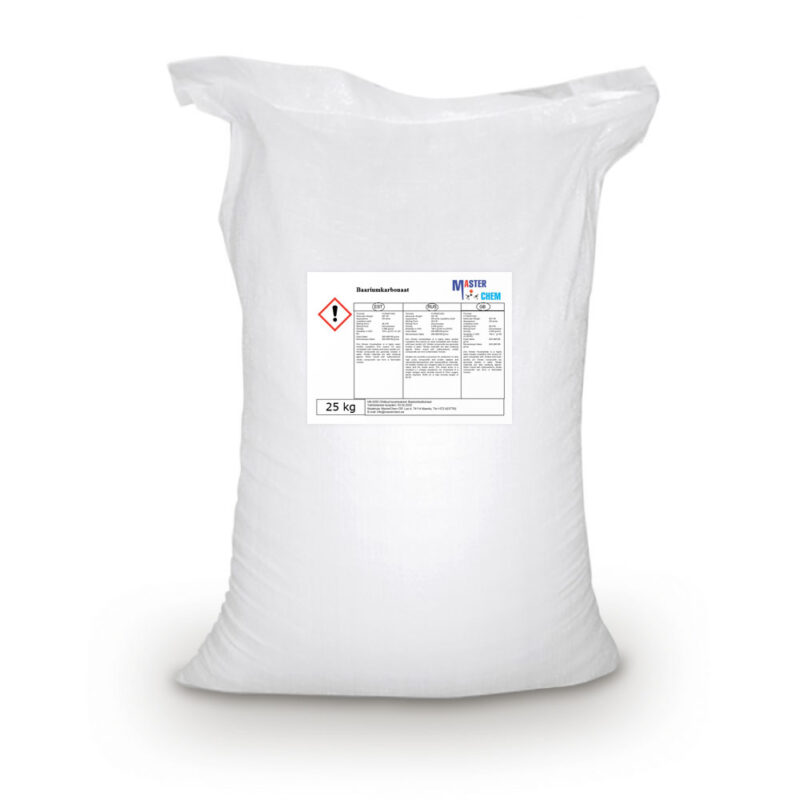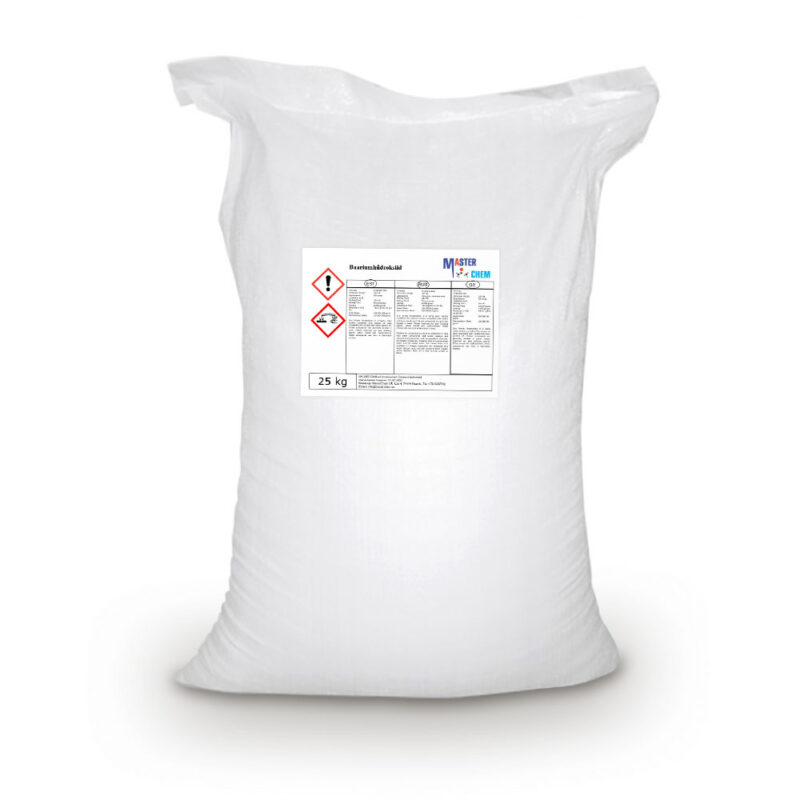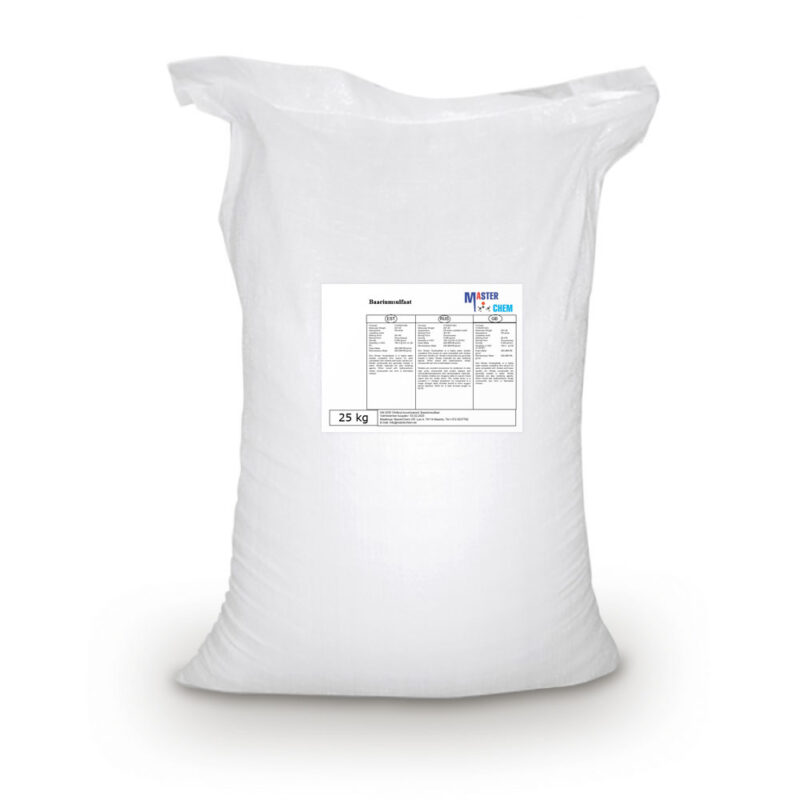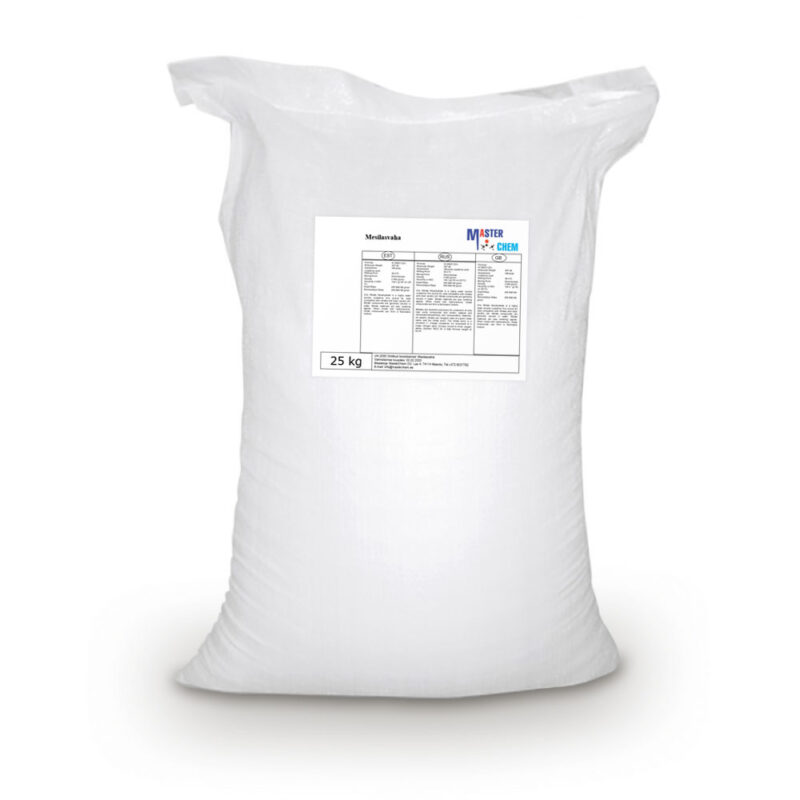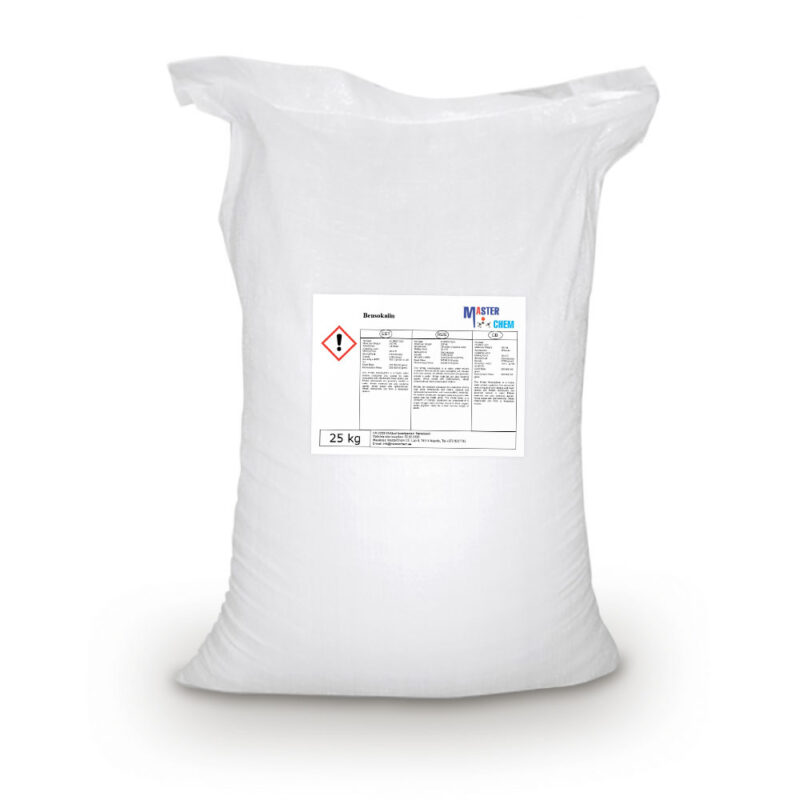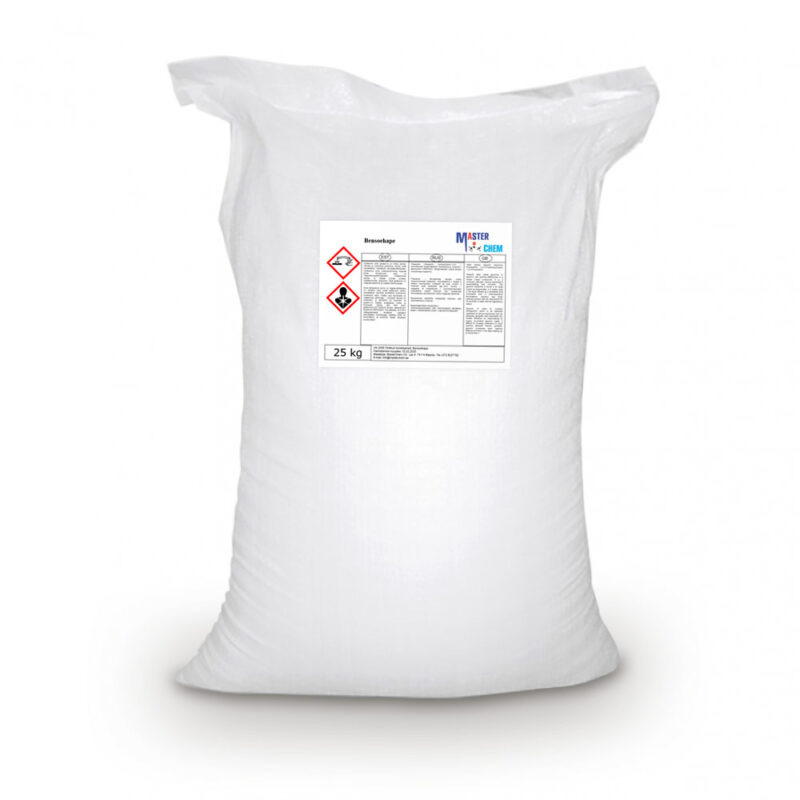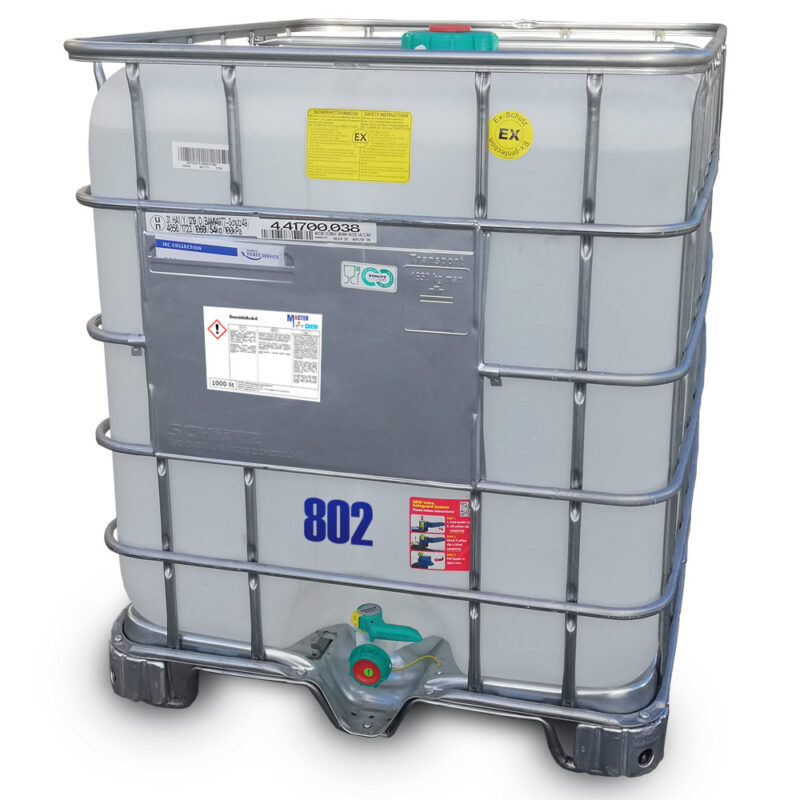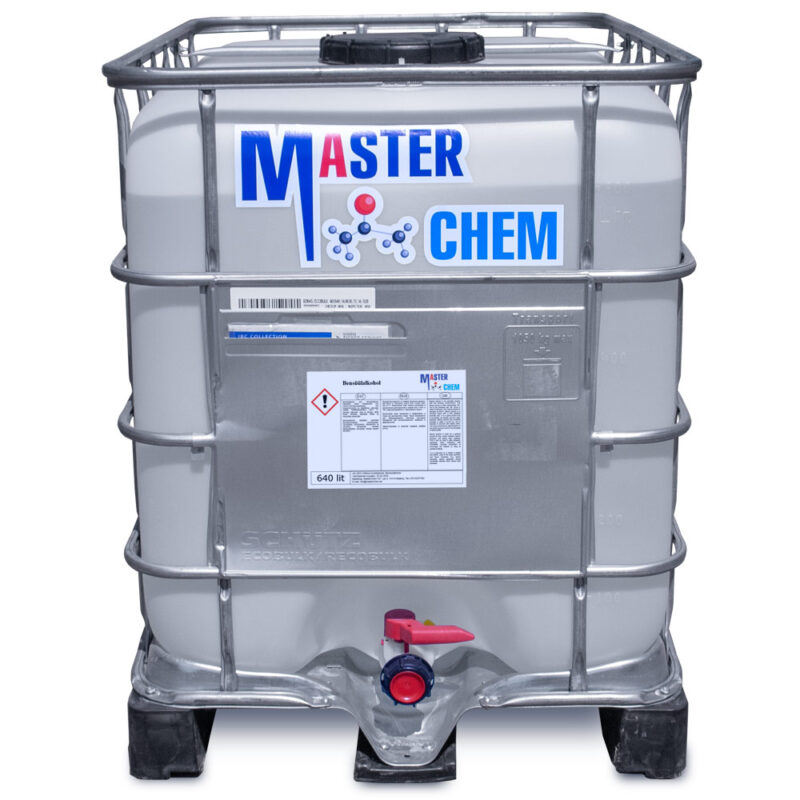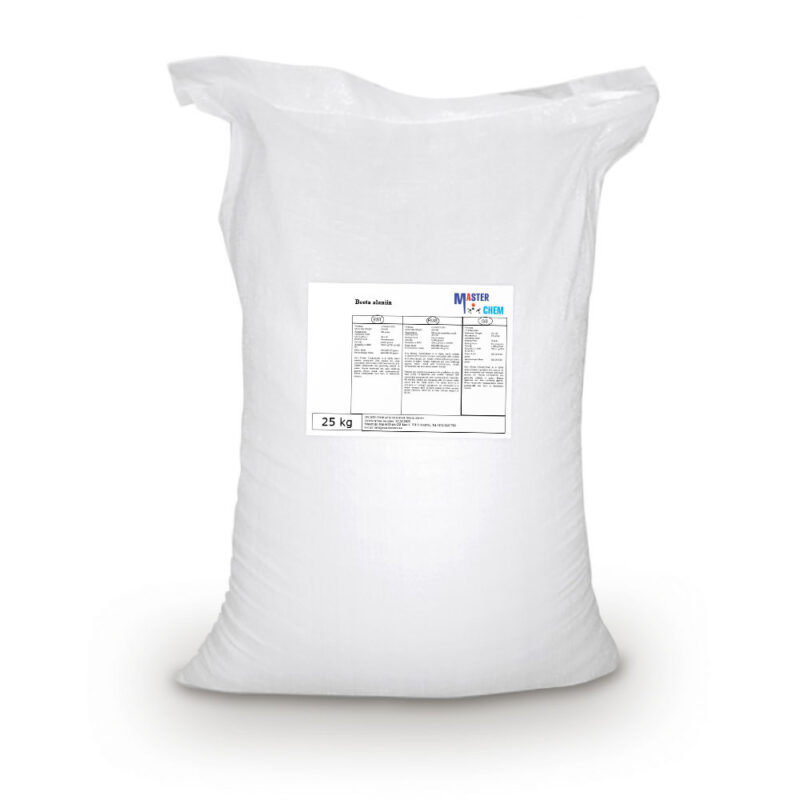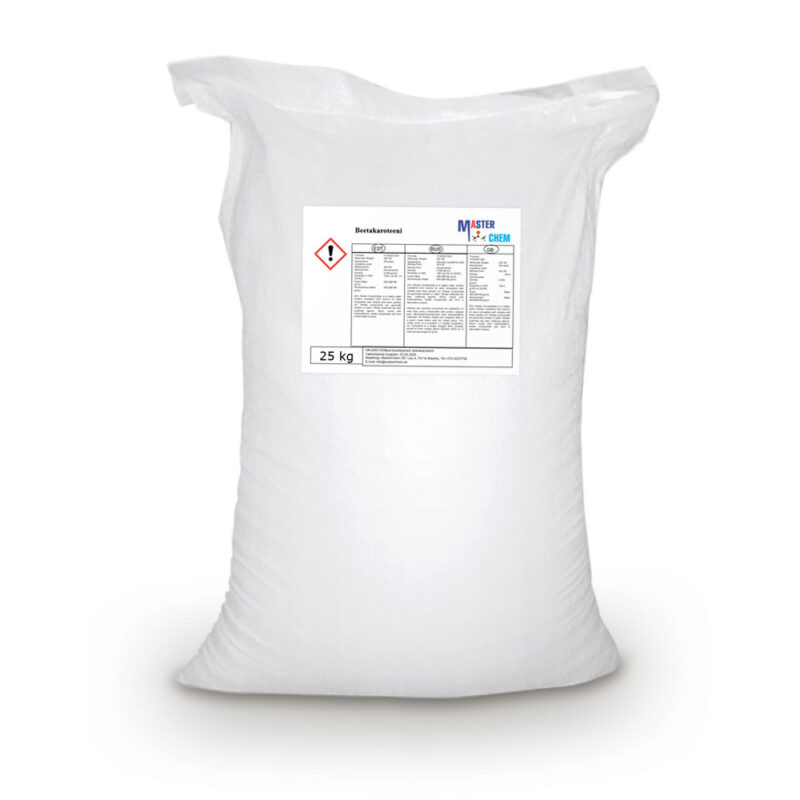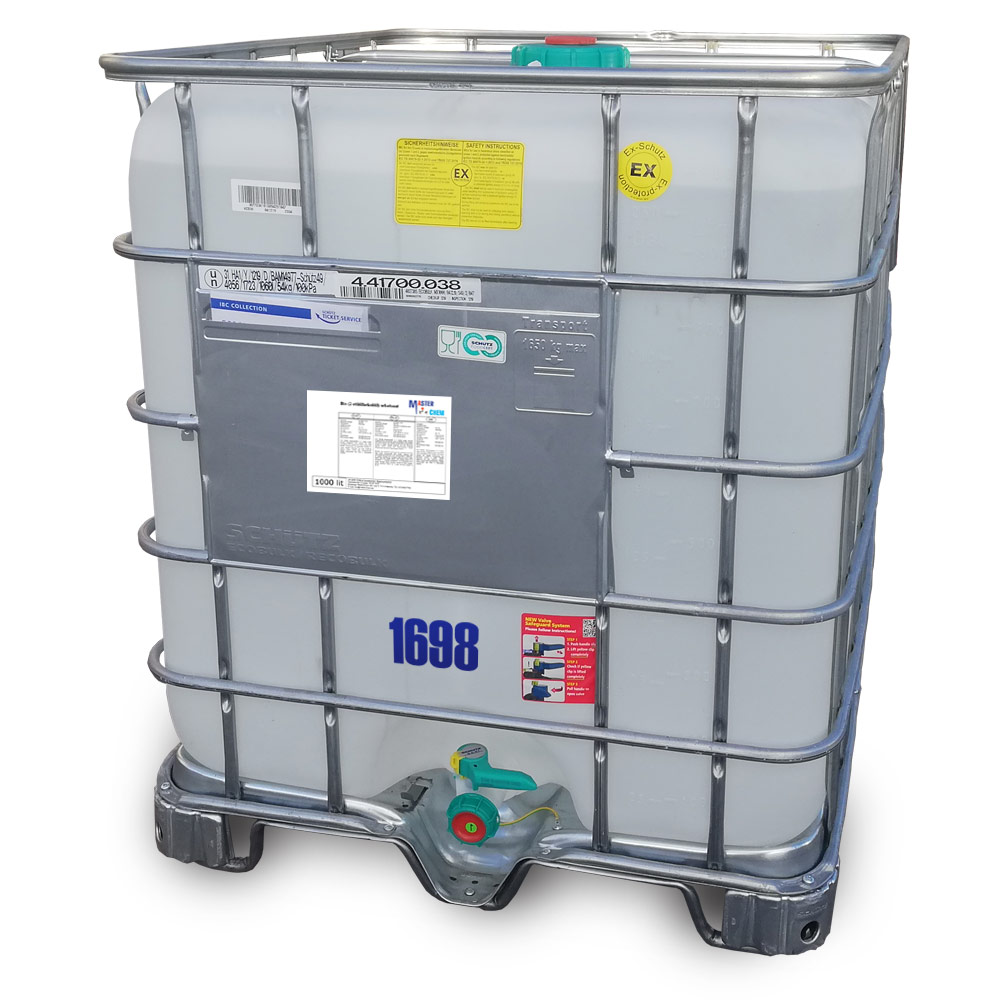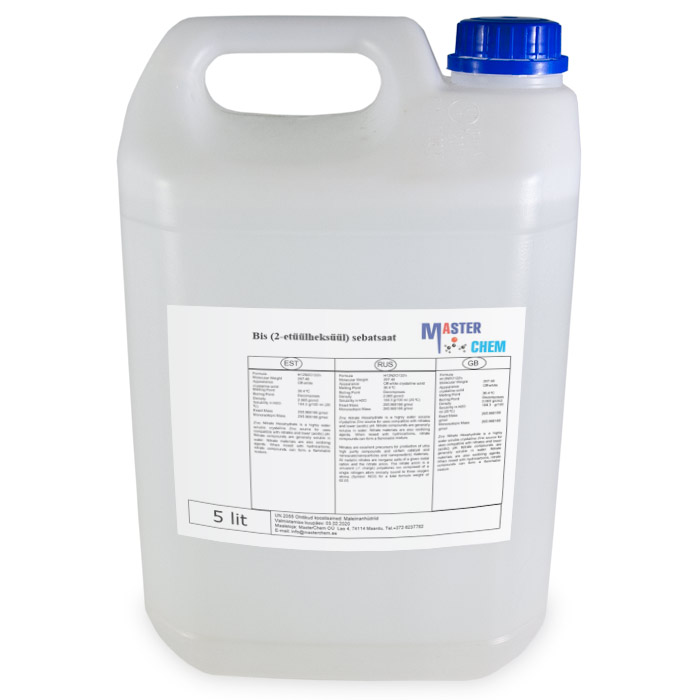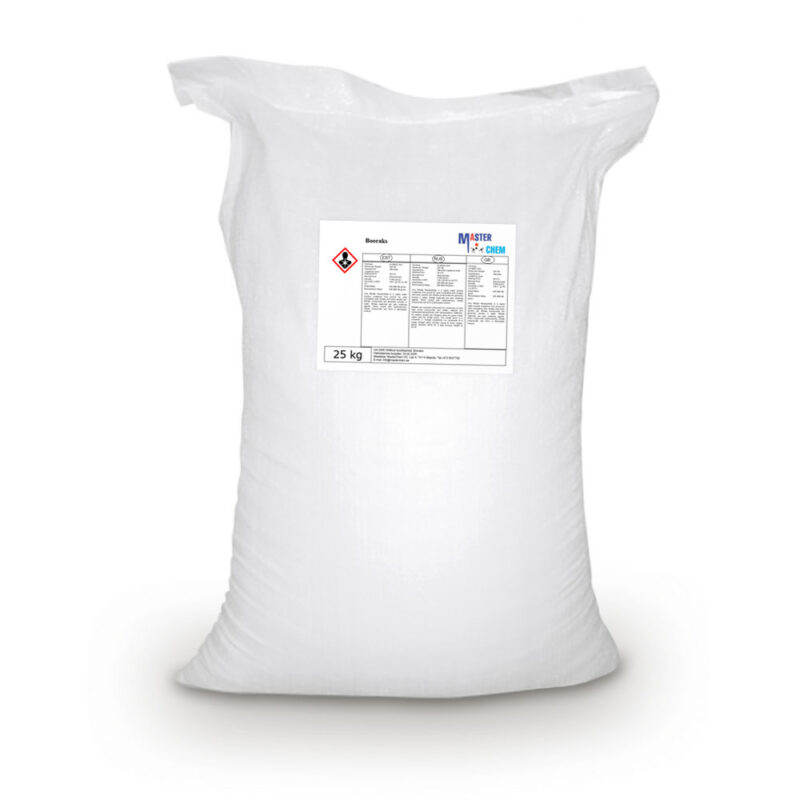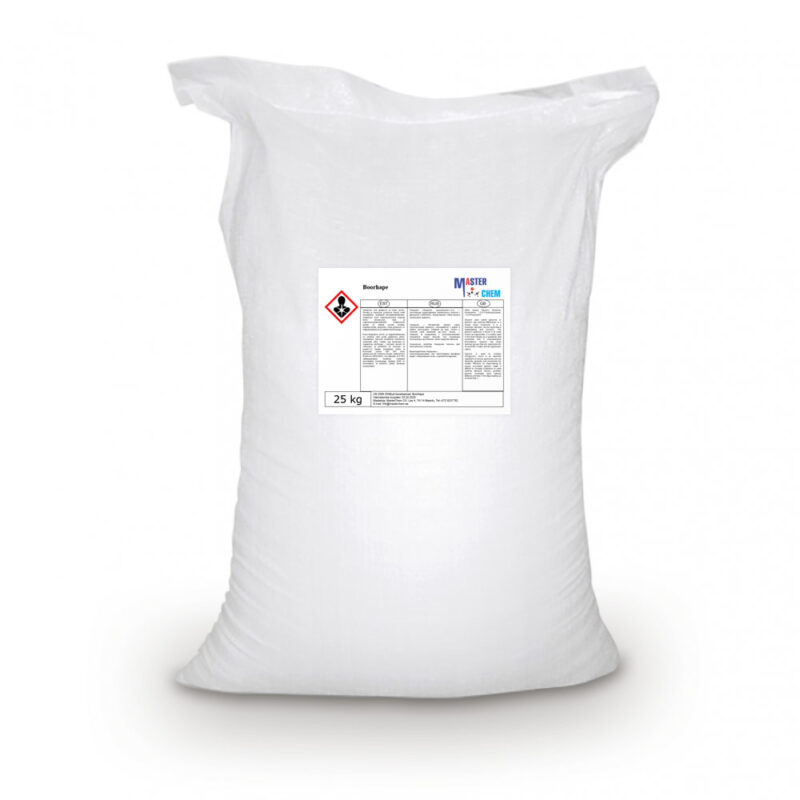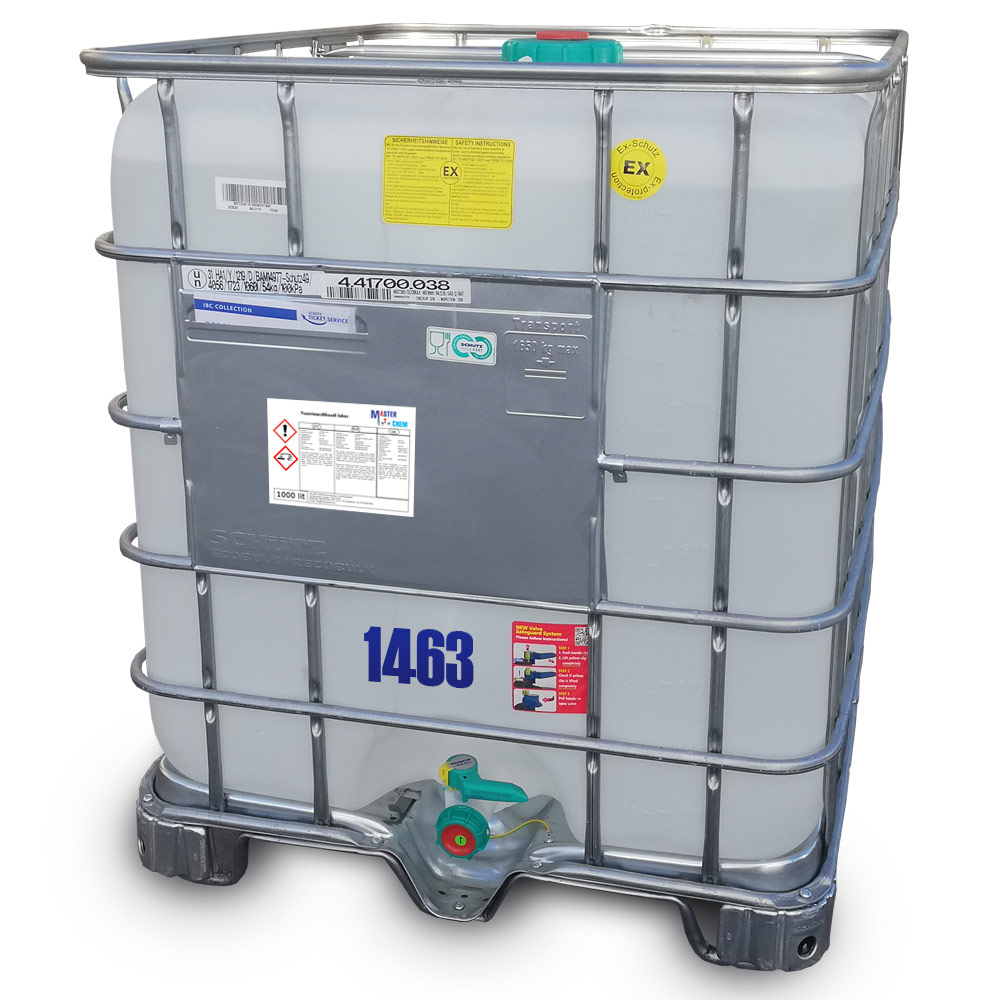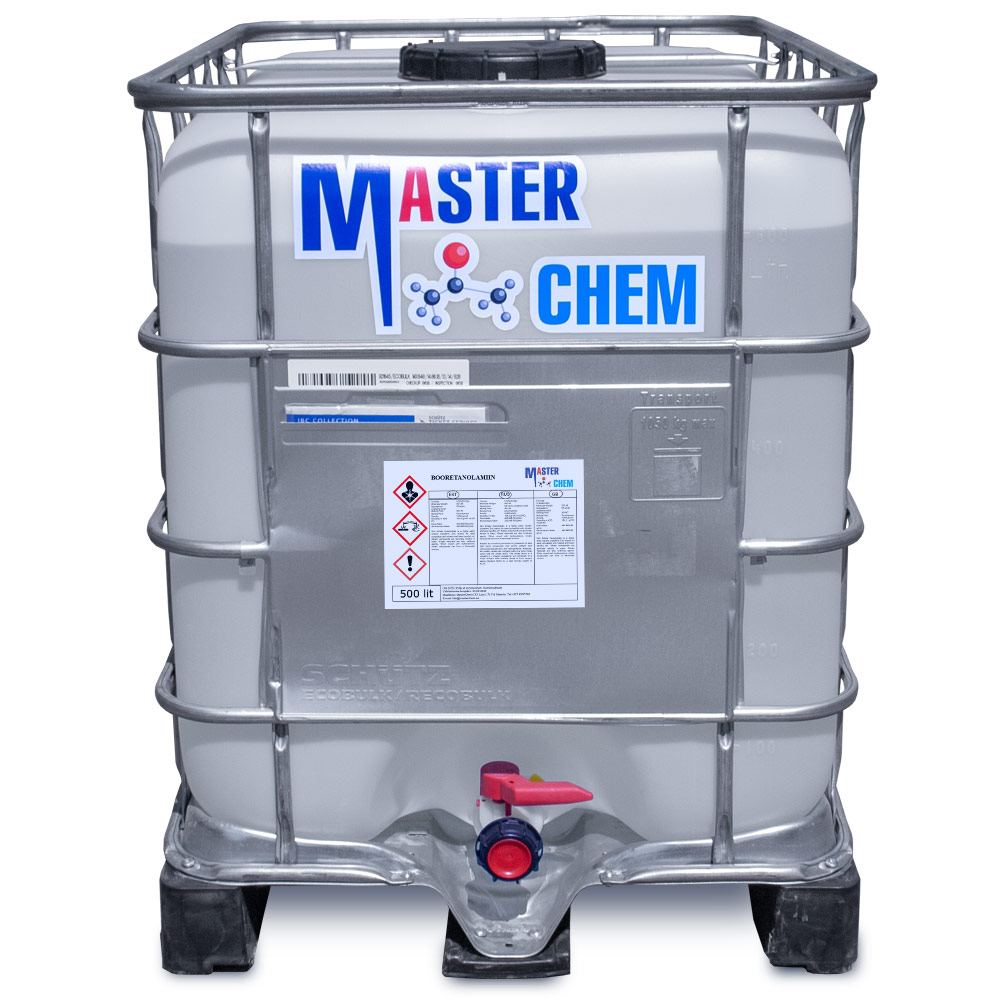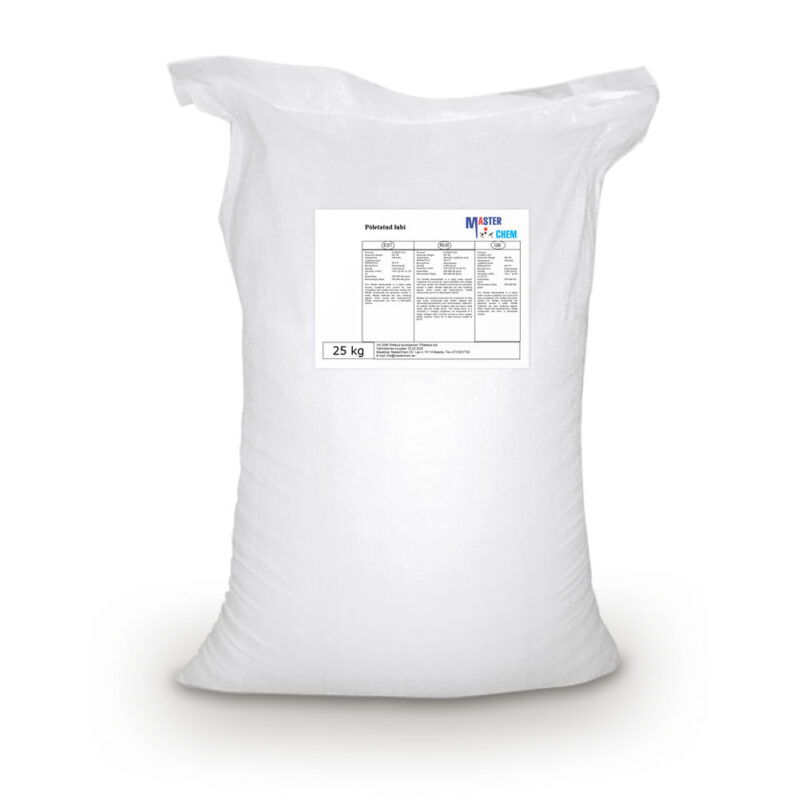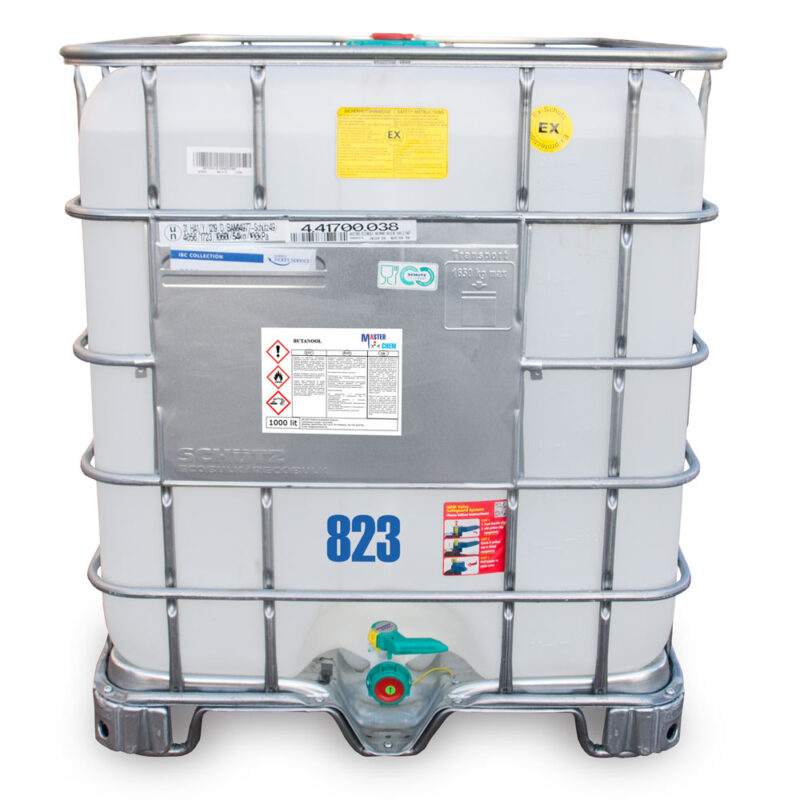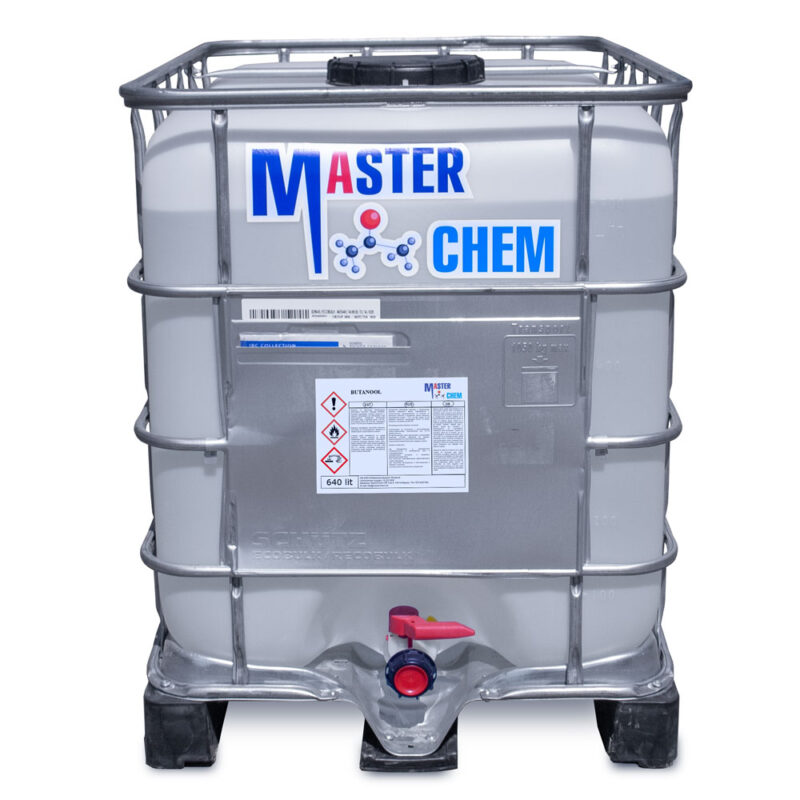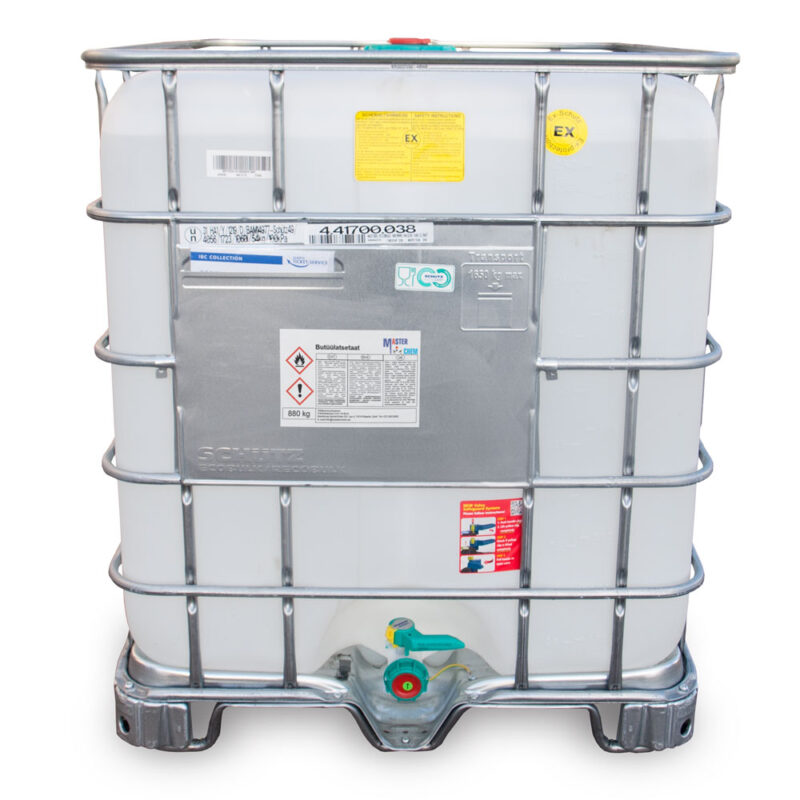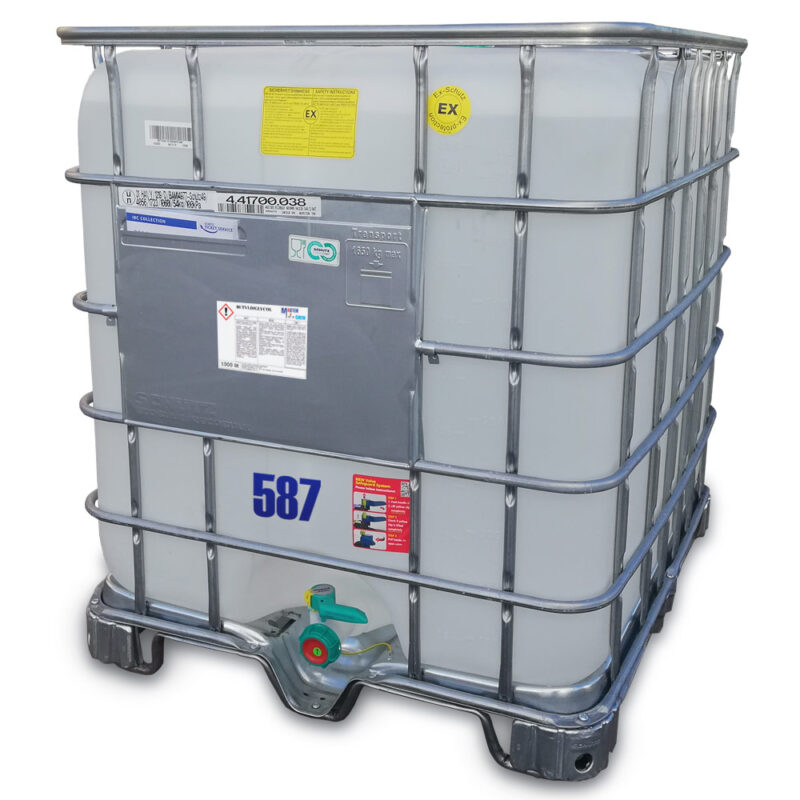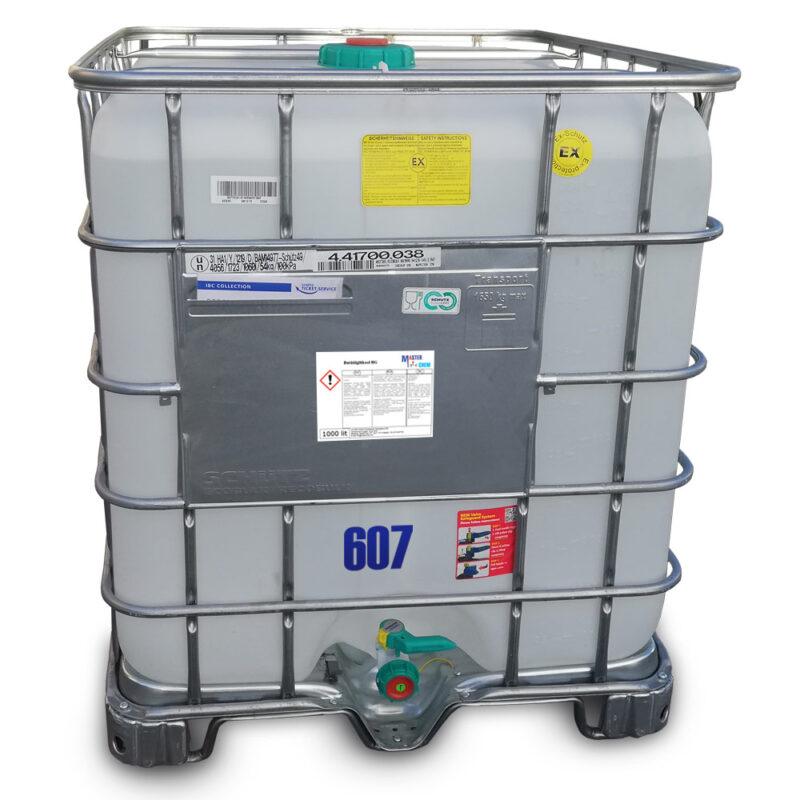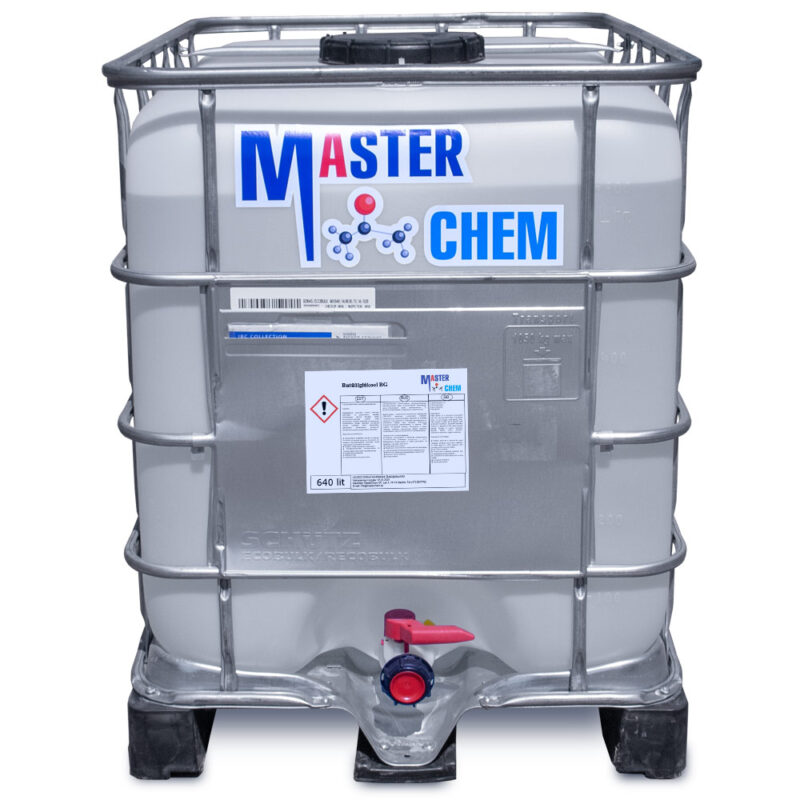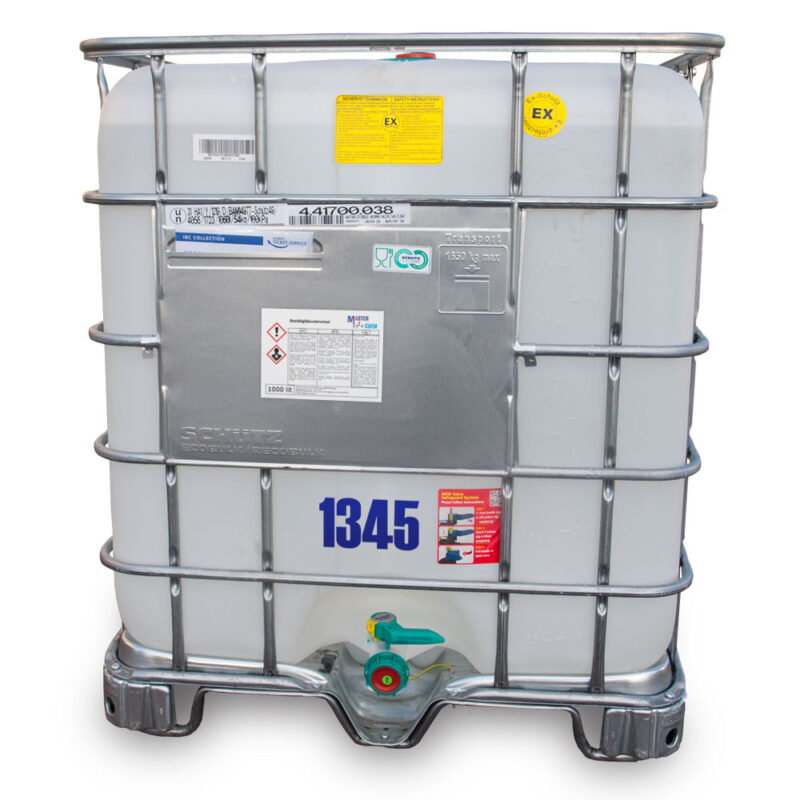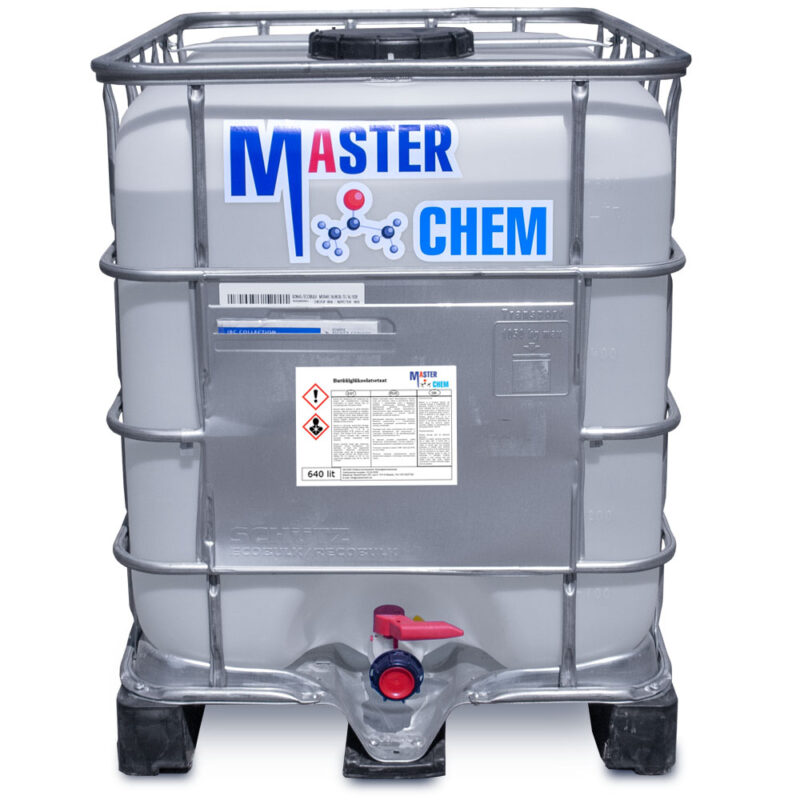Barium carbonate (CAS 513-77-9)
Barium carbonate (CAS 513-77-9)
Barium carbonate is the inorganic compound with the formula BaCO3. Like most alkaline earth metal carbonates, it is a white salt that is poorly soluble in water. It occurs as the mineral known as witherite. In a commercial sense, it is one of the most important barium compounds.
It is mainly used to remove sulfate impurities from feedstock of the chlor-alkali process. Otherwise it is a common precursor to barium-containing compounds such as ferrites.
Barium hydroxide (CAS 12230-71-6)
Barium hydroxide (CAS 12230-71-6)
Barium hydroxide is a chemical compound with the chemical formula Ba(OH)2(H2O)x. The monohydrate (x = 1), known as baryta or baryta-water, is one of the principal compounds of barium. This white granular monohydrate is the usual commercial form.
Industrially, barium hydroxide is used as the precursor to other barium compounds. The monohydrate is used to dehydrate and remove sulfate from various products.[5] This application exploits the very low solubility of barium sulfate. This industrial application is also applied to laboratory uses.
Barium sulfate (CAS 7727-43-7)
Barium sulfate (CAS 7727-43-7)
Barium sulfate (or sulphate) is the inorganic compound with the chemical formula BaSO4. It is a white crystalline solid that is odorless and insoluble in water. It occurs as the mineral barite, which is the main commercial source of barium and materials prepared from it. The white opaque appearance and its high density are exploited in its main applications.
Beeswax (CAS 64742-26-3)
Beeswax (CAS 64742-26-3)
Beeswax absolute is obtained by alcohol extraction of beeswax. The yield is generally less than 1%.The yellowish-brown, viscous product has a mild, honey-like odor, and high tenacity; it is used almost exclusively in fine fragrances.
Crude yellow beeswax is harvested together with honey and represents a secondary secretion of the bee. Once the honey is recovered from the honeycomb by draining the cells, the wax combs are washed with water, melted and poured into molds to harden. The wax is refined by melting in hot water to which sulfuric acid or alkali may be added to extract impurities. The resulting wax is referred to as yellow beeswax. Yellow beeswax contains cerolein, a mixture of fatty acids and soluble in hot alcohol and slightly soluble in cold alcohol; myricyl alcohol and myricyl palmitate, insoluble in alcohol. Beeswax is produced worldwide with the same chemical composition. The odor may vary slightly, depending on the source.
Benzocaine (CAS 94-09-7)
Benzocaine (CAS 94-09-7)
Benzocaine is an ester of paraaminobenzoic acid, lacking the terminal diethylamino group of procaine, with anesthetic activity. Benzocaine binds to the sodium channel and reversibly stabilizes the neuronal membrane which decreases its permeability to sodium ions. Depolarization of the neuronal membrane is inhibited, thereby blocking the initiation and conduction of nerve impulses.
Benzoic acid (CAS 65-85-0)
Benzoic acid (CAS 65-85-0)
Benzoic acid /bɛnˈzoʊ.ɪk/ is a white (or colorless) solid with the formula C6H5CO2H. It is the simplest aromatic carboxylic acid. The name is derived from gum benzoin, which was for a long time its only source. Benzoic acid occurs naturally in many plants and serves as an intermediate in the biosynthesis of many secondary metabolites. Salts of benzoic acid are used as food preservatives. Benzoic acid is an important precursor for the industrial synthesis of many other organic substances. The salts and esters of benzoic acid are known as benzoates.
Benzyl alcohol (CAS 100-51-6)
Benzyl alcohol (CAS 100-51-6)
Benzyl alcohol is used as a general solvent for inks, waxes, shellacs, paints, lacquers, and epoxy resin coatings. Thus it can be used in paint strippers, especially when combined with compatible viscosity enhancers to encourage the mixture to cling to painted surfaces.
It is a precursor to a variety of esters and ethers, used in the soap, perfume, and flavor industries. E.g. benzyl benzoate, benzyl salicylate, benzyl cinnamate, dibenzyl ether, benzyl butyl phthalate.
It is also used in e-liquid for e-cigarettes to enhance the flavors used. When applied to damaged skin or mucous membranes at a 10% concentration, it acts as a local anesthetic and antimicrobial agent. It can be utilized as a degreaser in rug cleaning products. As a dye solvent, it enhances the process of dying wool, nylon, and leather. It also has use as a photographic film developer and as an insect repellent.
CAS: 100-51-6
Beta alanine (CAS 107-95-9)
Beta alanine (CAS 107-95-9)
β-Alanine (or beta-alanine) is a naturally occurring beta amino acid, which is an amino acid in which the amino group is attached to the β-carbon (i.e. the carbon two atoms away from the carboxylate group) instead of the more usual α-carbon for alanine (α-alanine). The IUPAC name for β-alanine is 3-aminopropanoic acid. Unlike its counterpart α-alanine, β-alanine has no stereocenter.
Beta carotene (CAS 7235-40-7)
Beta carotene (CAS 7235-40-7)
Beta carotene is an organic, strongly coloured red-orange pigment abundant in fungi, plants, and fruits. It is a member of the carotenes, which are terpenoids (isoprenoids), synthesized biochemically from eight isoprene units and thus having 40 carbons. Among the carotenes, β-carotene is distinguished by having beta-rings at both ends of the molecule. β-Carotene is biosynthesized from geranylgeranyl pyrophosphate.
Bis (2-ethylhexyl) sebacate (CAS 122-62-3)
Bis (2-ethylhexyl) sebacate (CAS 122-62-3)
Dioctyl sebacate (also di(2-ethylhexyl) sebacate, commonly abbreviated as DOS, DEHS, and BEHS) is an organic compound which is the diester of sebacic acid and 2-ethylhexanol. It is an oily colorless liquid and is used as a plasticizer, including in the explosive C4. It has also found use in Dot 5 brake fluid, in ester-based engine oils and additives, as seed particle for Particle Image Velocimetry (PIV) and as a model compound that forms stable aerosols.
Borax (CAS 12179-04-3)
Borax (CAS 12179-04-3)
Borax, also known as sodium borate, sodium tetraborate, or disodium tetraborate, is an important boron compound, a mineral, and a salt of boric acid. Powdered borax is white, consisting of soft colorless crystals that dissolve in water. A number of closely related minerals or chemical compounds that differ in their crystal water content are referred to as borax, and the word is usually used to refer to the octahydrate. Commercially sold borax is partially dehydrated.
Borax is a component of many detergents, cosmetics, and enamel glazes. It is used to make buffer solutions in biochemistry, as a fire retardant, as an anti-fungal compound, in the manufacture of fiberglass, as a flux in metallurgy, neutron-capture shields for radioactive sources, a texturing agent in cooking, as a cross-linking agent in Slime, as an alkali in photographic developers, as a precursor for other boron compounds, and along with its inverse, boric acid, is useful as an insecticide.
In artisanal gold mining, borax is sometimes used as part of a process (as a flux) meant to eliminate the need for toxic mercury in the gold extraction process, although it cannot directly replace mercury. Borax was reportedly used by gold miners in parts of the Philippines in the 1900s.
Borax was first discovered in dry lake beds in Tibet and was imported via the Silk Road to the Arabian Peninsula in the 8th century AD. Borax first came into common use in the late 19th century when Francis Marion Smith’s Pacific Coast Borax Company began to market and popularize a large variety of applications under the 20 Mule Team Borax trademark, named for the method by which borax was originally hauled out of the California and Nevada deserts.
Boric Acid (CAS 10043-35-3)
Boric Acid (CAS 10043-35-3)
Boric Acid (CAS 10043-35-3)
Boric acid, also called hydrogen borate, boracic acid, and orthoboric acid is a weak, monobasic Lewis acid of boron. However, some of its behaviour towards some chemical reactions suggest it to be tribasic acid in the Brønsted sense as well. Boric acid is often used as an antiseptic, insecticide, flame retardant, neutron absorber, or precursor to other chemical compounds. It has the chemical formula H3BO3 (sometimes written B(OH)3), and exists in the form of colorless crystals or a white powder that dissolves in water. When occurring as a mineral, it is called sassolite.
Boron ethanolamine (CAS 53587-44-3)
Boron ethanolamine (CAS 53587-44-3)
Boron ethanolamine is a liquid foliar fertilizer that is quickly absorbed and assimilated by the crop, rich in Boron, specially developed as a source of this element. Its application stimulates the growth of cambium tissues and apical meristems, promotes calcium mobility and assimilation, and also the production of pollen and fertilization.
Burned lime (CAS 1305-78-8)
Burned lime (CAS 1305-78-8)
Calcium oxide, CaO, occurs as white or grayish-white lumps or granular powder. The presence of iron gives it a yellowish or brownish tint.
Calcium Oxide is a general food additive consisting of white granules or powder of poor water solubility. it is obtained by heating limestone (calcium carbonate) in a furnace. it is also termed lime or quicklime. it is used as an anticaking agent, firming agent, and nutritive supple- ment in applications such as grain products and soft candy.
Butanol (CAS 71-36-3)
Other names: butanol, butyl alcohol
Description:
Butanol (butyl alcohol) is a slightly oily liquid. Without color and with a bright well-expressed smell of fusel oil. It is mixed with other organic solvents. Unlike other alcohols, it is slightly soluble in water (7.6 g/100 g)
Application and usage:
The unique molecular formula, physical properties, and chemical properties of this compound determine the breadth of its use in a variety of tasks in the pharmaceutical, light, chemical and other industries. In different directions, different isomers of butanol are involved (primary, secondary and tertiary butyl alcohols, normal isobutanol). Primary butanol is used to dissolve paint products (lacquers, paints, drying oils), alkaloids, resins, plasticizers, rubbers and vegetable oils. With its participation, dibutylbenzene-1,2-dicarbonate, tributyl ether of phosphoric acid, butyl acetate and butyl ether of acrylic acid are created. Also, its use is advisable in the creation of artificial leather, textiles, durable glass, resistant to impact, photographic films and perfumes.
CAS: 71-36-3
Butyl acetate (CAS 123-86-4)
Other names: Butyl acetate, butyl ethanoate, n-Butyl acetate, acetic acid, n-butyl ester, butile.
Butyl acetate – is a volatile and transparent fluid without color or with a slight yellowish tint, with a specific fruity smell. Organic substance of the ester class, organic solvent. Butyl acetate is slightly soluble in water; it is mixed with organic solvents and vegetable oils. It dissolves resins and fats well. Butyl acetate is a good solvent for nitrocellulose, chlorinated rubber, glyptal resins and other film-forming substances used in the paint industry. It is part of many multicomponent solvents, such as solvents 646 and 648.
Chemically, it is a typical representative of esters. It reacts with acids, alkalis, hydrogen, alcohols, hydroxylamine, hydrazine, ORGANOMETALLIC compounds. With ammonia, it forms amides. When heated, it decomposes with the release of gaseous and combustible hydrocarbons-butenes. Practically does not react with oxidizing agents.
Butyl glycol BG (CAS 111-76-2)
2-Butoxyethan-1-ol, 2-Butoxyethanol, Butyl cellosolve, Butyl glycol, Butyl monoether glycol, EGBE (ethylene glycol monobutyl ether), Dowanol EB, Bane-Clene, Eastman EB solvent, BH-33, industrial cleaner, Solvaset, 2-BE, EGMBE, Butyl oxitol, Ektasolve, Jeffersol EB
Description:
Butyl glycol is a chemical compound with the formula C6H14O2, is a glycol ether. A low-volatile, high-boiling, low-odor liquid is used as a solvent and synthesis feedstock. Excellent auxiliary solvent in aqueous LCM (water-based paints). Soluble in water, alcohols, glycols, diethyl ether, acetone, chloroform and other organic solvents.
Butyl glycol BG (CAS 111-76-2)
2-Butoxyethan-1-ol, 2-Butoxyethanol, Butyl cellosolve, Butyl glycol, Butyl monoether glycol, EGBE (ethylene glycol monobutyl ether), Dowanol EB, Bane-Clene, Eastman EB solvent, BH-33, industrial cleaner, Solvaset, 2-BE, EGMBE, Butyl oxitol, Ektasolve, Jeffersol EB
Description:
Butyl glycol is a chemical compound with the formula C6H14O2, is a glycol ether. A low-volatile, high-boiling, low-odor liquid is used as a solvent and synthesis feedstock. Excellent auxiliary solvent in aqueous LCM (water-based paints). Soluble in water, alcohols, glycols, diethyl ether, acetone, chloroform and other organic solvents.
Butylglycol acetate (CAS 112-07-2)
Butylglycol acetate (CAS 112-07-2)
Butylglycol acetate acetate is used in a variety of industries as a solvent for nitrocellulose and multicolored lacquers, varnishes, enamels, and epoxy resin. It is useful as a solvent because of its high boiling point. It is also used in the manufacture of polyvinyl acetate latex. It is an ingredient in ink removers and spot removers.

